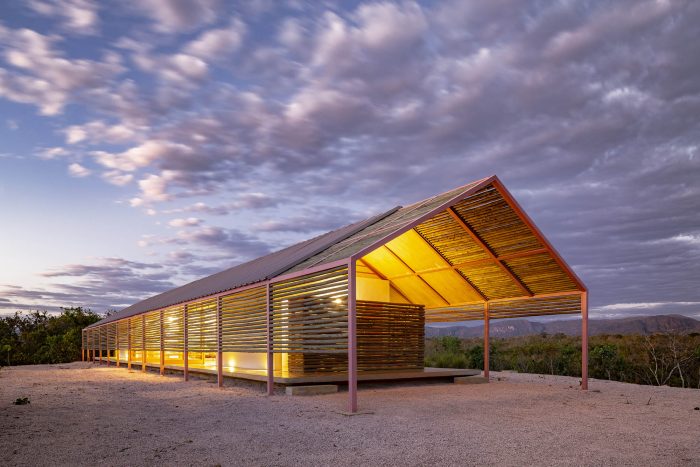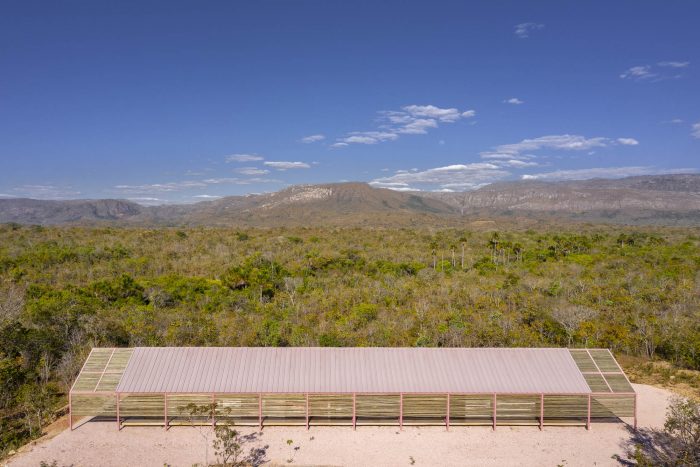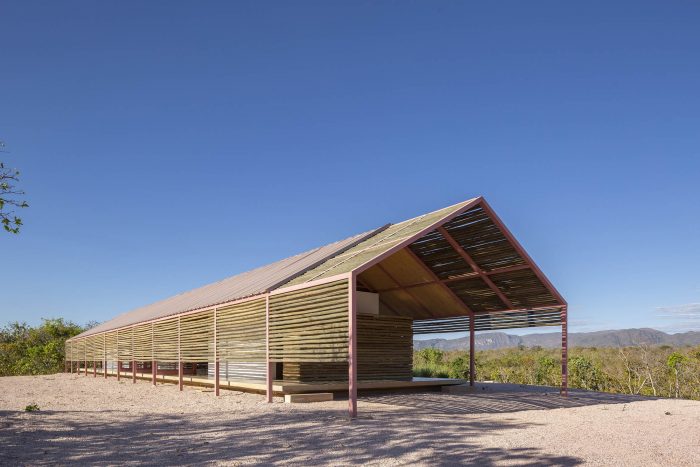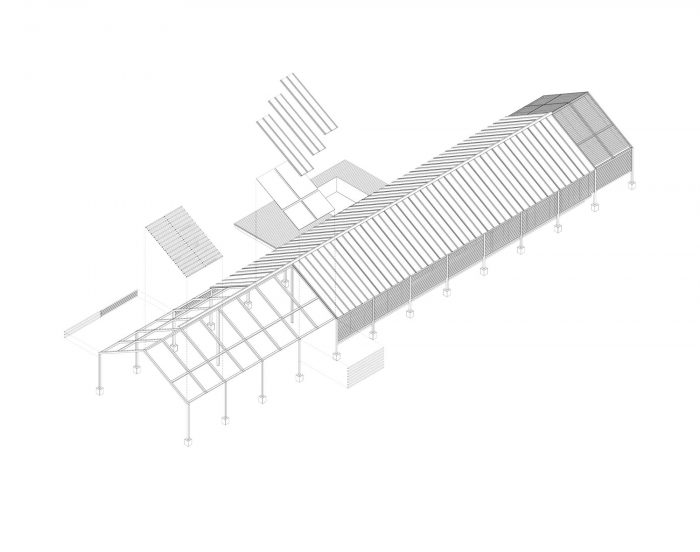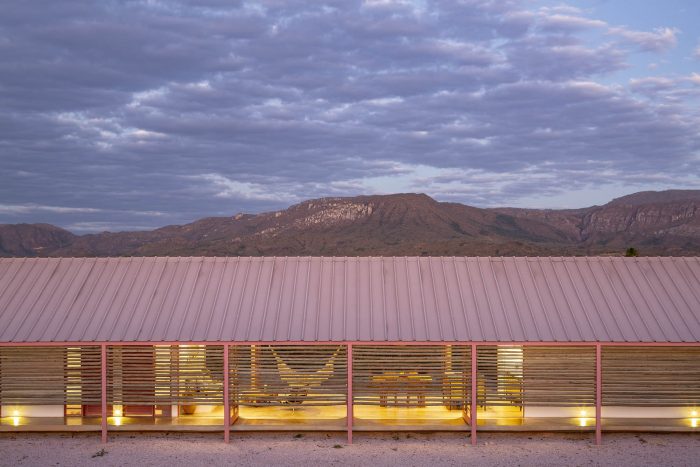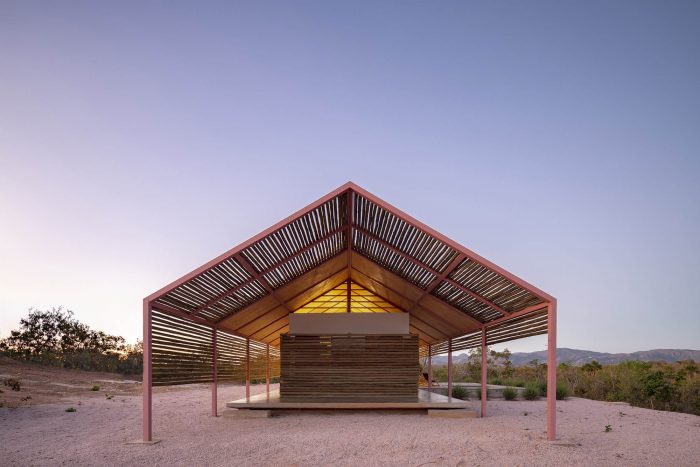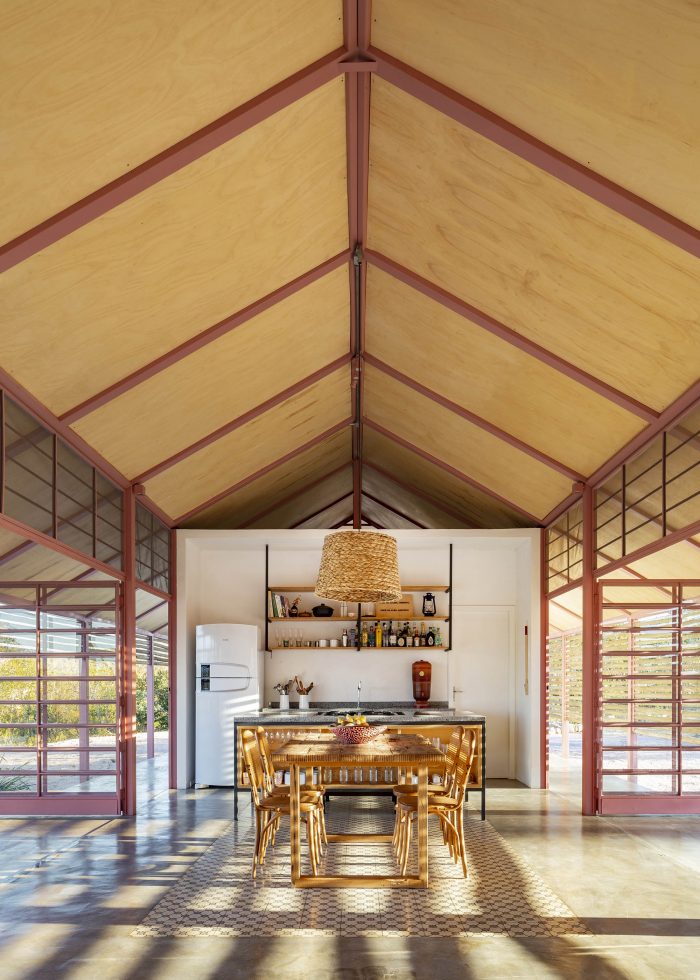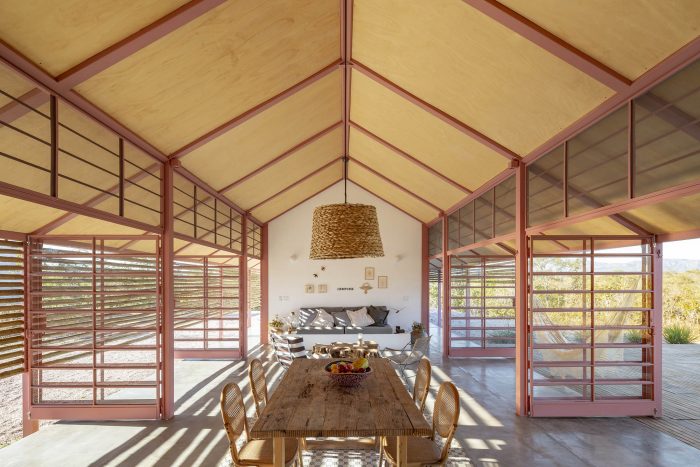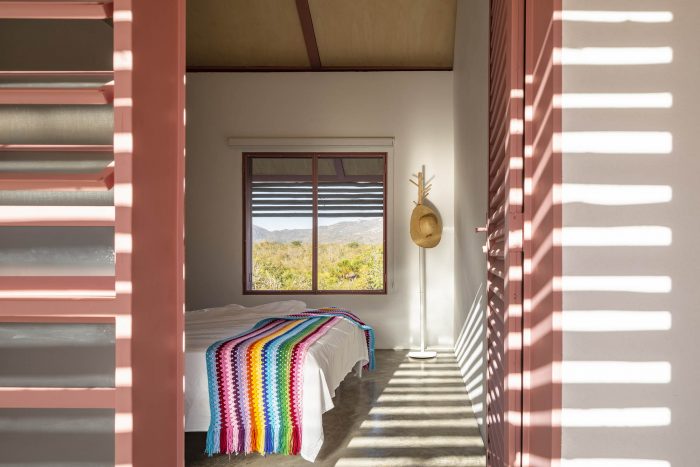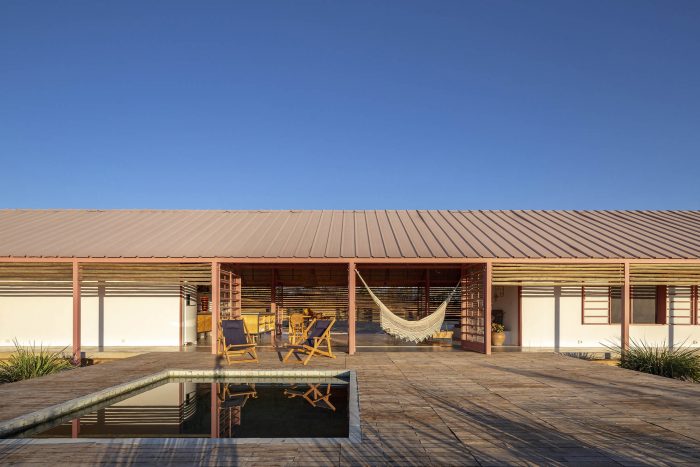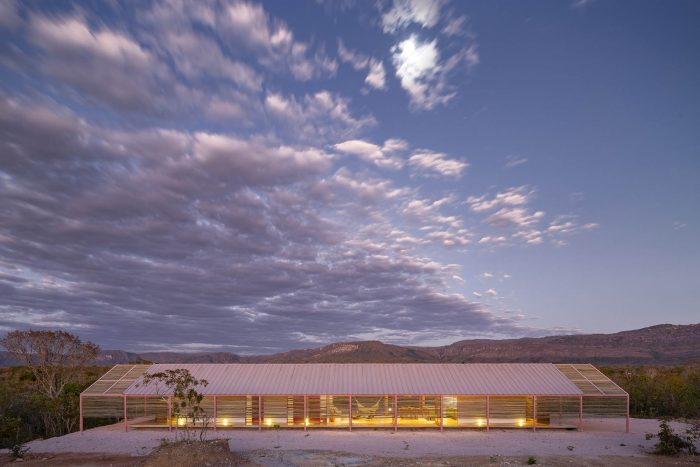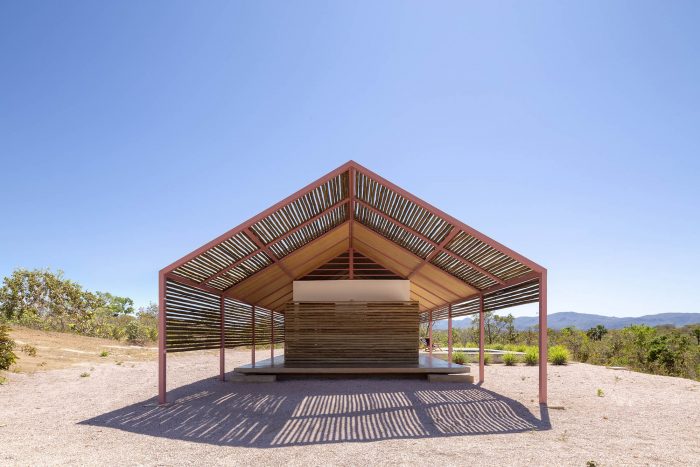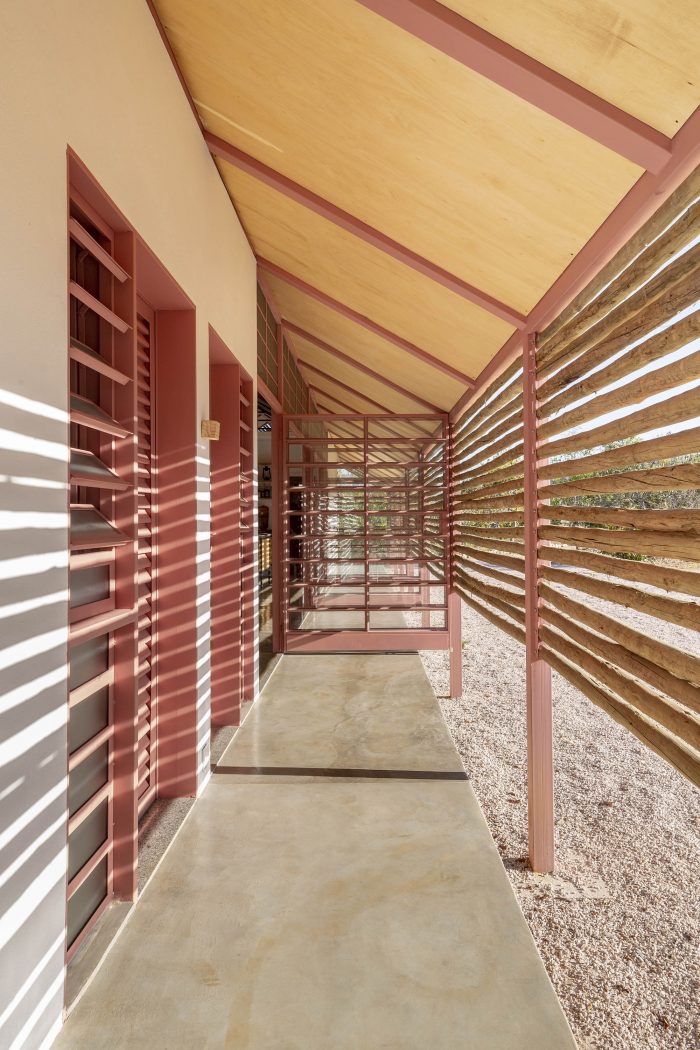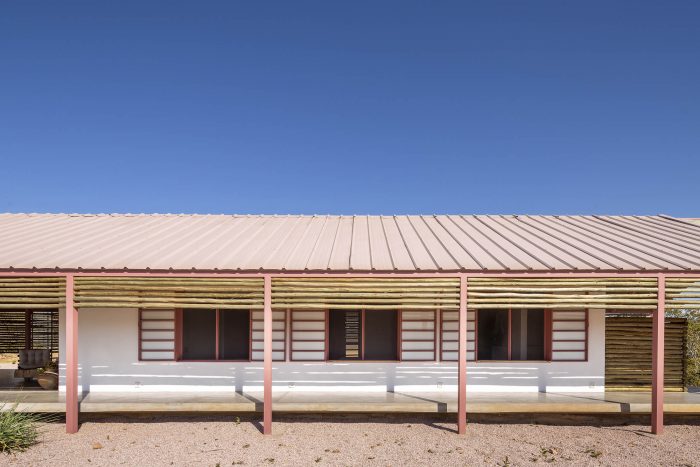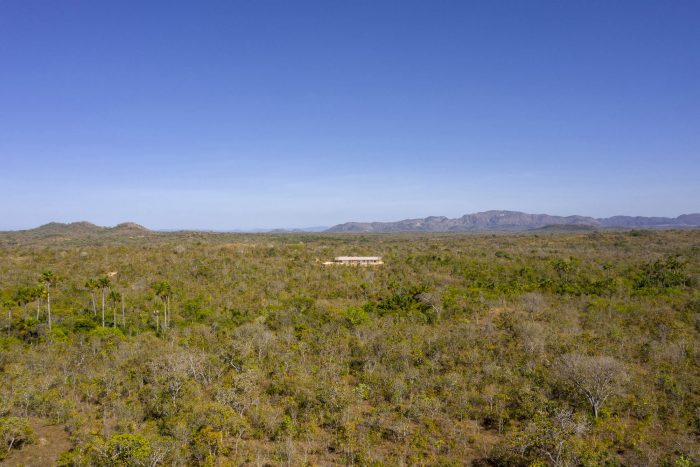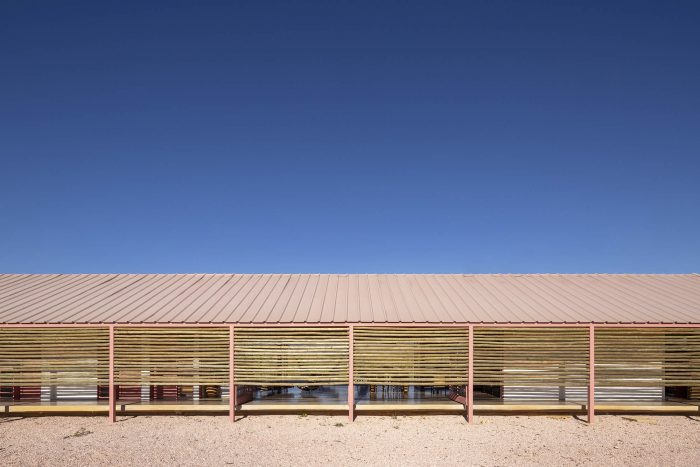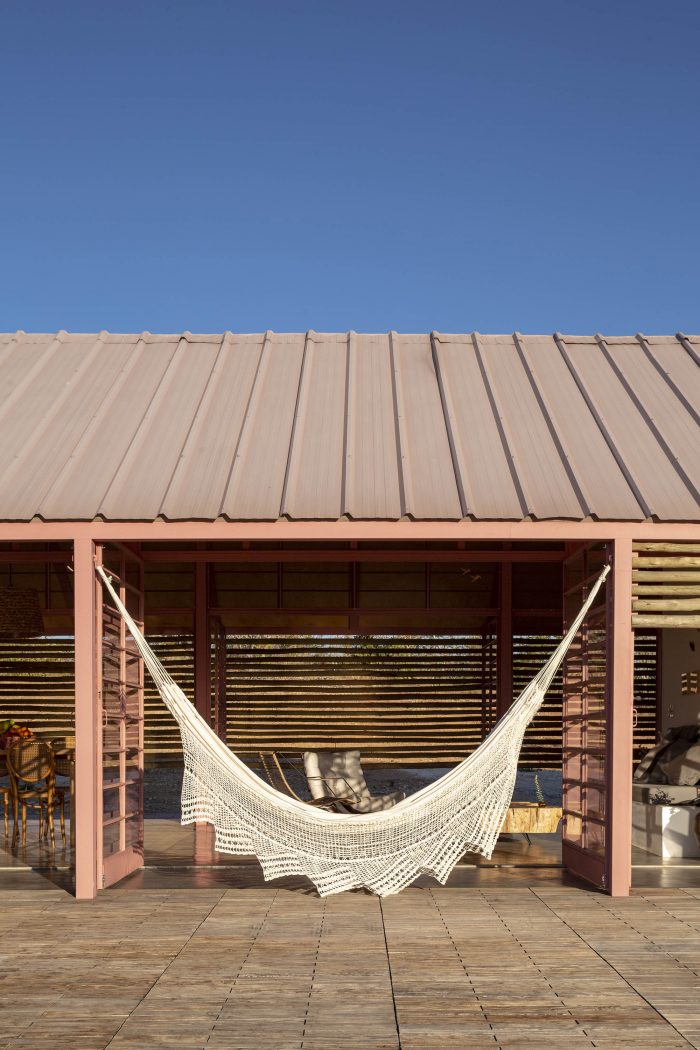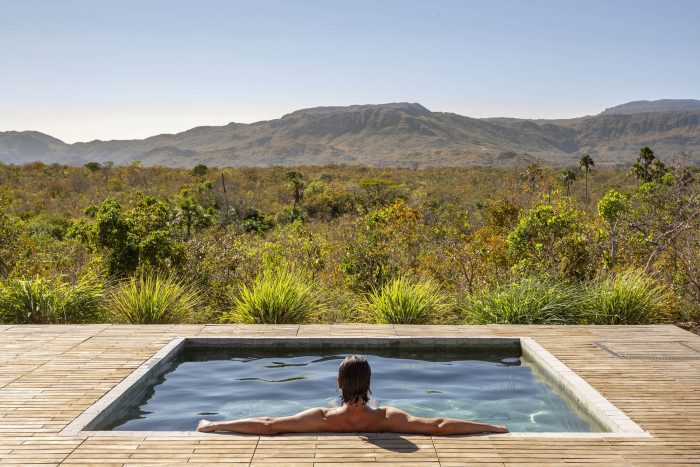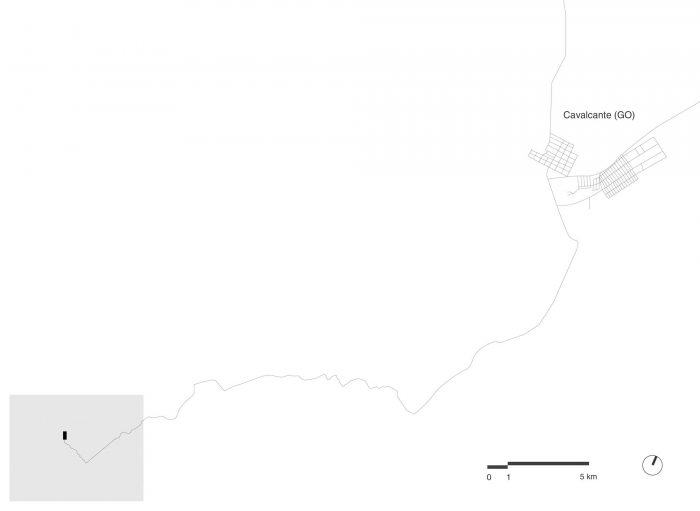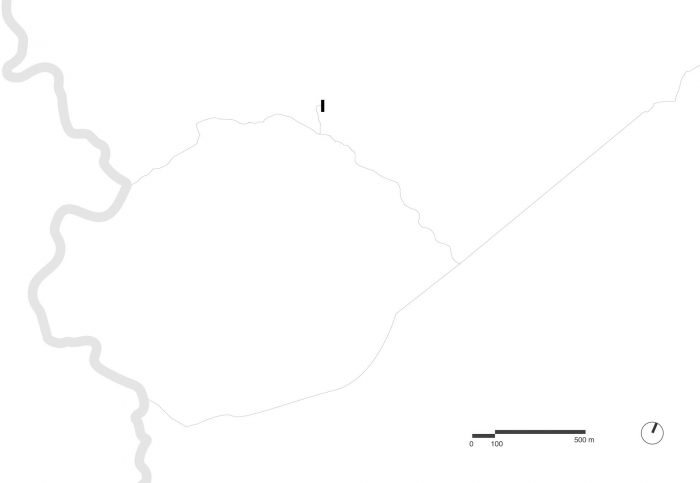Casa Cavalcante位于266公顷的中心地带,毗邻Chapada dos Veadeiros国家公园,该公园拥有世界上最重要的生物群落之一:Cerrado(巴西热带草原)。因此,将建筑对周围环境的影响降到最低的意图指导了整个设计过程。当地劳动力的资质有限,获取土地的难度极大,该地区气候极度炎热,施工预算有限,这些因素决定了它的形状和材质。
Casa Cavalcante was built in the center of an area of 266 hectares, adjacent to the Chapada dos Veadeiros National Park which houses one of the most important biomes in the world: the Cerrado (Brazilian savanna). Therefore, the intention to minimize the impact of the building on its surroundings guided the entire design process. The limited qualification of local labor, the enormous difficulty in accessing the land, the extremely hot climate in the region, and the limited budget for construction were the factors that defined its shape and materiality.
我们将施工过程定义为两个阶段。第一个阶段应用远程预制构件并在施工现场组装,而第二个阶段主要使用当地的手工劳动。我们决定先建造房屋的半工业化部分。它的宏观结构是由金属柱的模块化序列组成,并由热声屋顶瓦(也叫夹心瓦)覆盖。通过这种方式,我们能够为工人提供遮阳,并在第二阶段的工作中保护他们免受强烈的阳光照射,而第二阶段的工作则采用手工制作的施工工艺。
We defined the construction process in two stages. The first one applied prefabricated elements remotely and assembled at the construction site, while the second used mostly local handmade labor. We have decided to construct the semi-industrialized part of the house at first. Its macrostructure is composed of a modular sequence of metallic columns and covered by thermoacoustic roof tiles, also called sandwich tiles. In this way, we were able to provide shade to the workers and protect them from the intense sun while working on the second phase of the work, which used handmade construction processes.
热声瓦的标准尺寸产生了房屋的结构调制和屋顶的倾斜度。措施和倾斜度是确定的,因此在装配过程中没有切割零件,这将最大限度地减少错误的可能性。延伸的屋檐的使用创造了一个宽敞的周边区域,作为房间之间的流通,并在一天中最热的时候保护房屋免受阳光直射。在 “外部 “的流通区域提供了居民与周围景观的持续接触。
The standard size of the thermoacoustic tile generated the structural modulation of the house and the roof pitch. The measures and inclinations were defined so that there was no cutting of parts during assembly, which would minimize the possibility of errors. The use of the extended eaves creates a spacious perimeter area that serves as circulation between the rooms and protects the house from direct sunlight during the hottest times of the day. The area of circulation on the “outside” provides the constant contact of the resident with the surrounding landscape.
所有房间都有自然采光和通风。此外,长期居住的地方(卧室、厨房和客厅)也有持续的交叉通风,并由天然桉树原木制成的砖墙保护,避免阳光直射。除了驱虫,桉树还是一种容易生长的树木。住宅的东面有一条较窄的保护带,而面向夕阳的外墙几乎整个垂直面都受到这种遮阳系统的保护。
All rooms have natural lighting and ventilation. Besides that, long-stay places (bedrooms, kitchen, and living room) also have constant cross ventilation and are protected from direct sunlight by the brise-soleil created with natural eucalyptus logs. In addition to being insect repellent, eucalyptus is an easy-to-grow tree. The east facade of the residence has a narrower strip of protection, while the facade facing the sunset has almost the entire vertical surface protected by this shading system.
由于土坯墙无法嵌入管道的原因,围墙用当地粘土制成的土坯砖砌成,内墙则用传统的巴西砖砌成,并有8个孔洞(提供安装电力和液压管道)。
The perimeter walls were built with adobe bricks made with local clay and the internal walls were erected with traditional Brazilian blocks with 8 holes (to provide the installation of electrical and hydraulic pipes), due to the reason that adobe walls are unable to embed pipes.
房子从地面抬起来有两个原因:防止爬行的动物上升和在降雨量大的季节保护土坯墙的水。
The house is raised from the ground for two reasons: to prevent creeping animals from rising and to protect the adobe walls of water in seasons with high rainfall.
位于Cerrado,一个经常发生自然火灾的生物群落中,任何建筑都需要 “Aceiro”,一种有遮盖物和小树种抑制的开放区域。因此,房子周围没有植物是防火策略的一部分。
Located in the cerrado, a biome where natural fires occur regularly, any building needs the ‘aceiro’, a kind of open area with suppression of cover and small tree species. The absence of plants around the house is therefore part of the fire protection strategy.
房子里所有的电能都是光伏发电。它是通过一个 “离网 “系统产生的,太阳能电池板安装在一个稍远的地方。
All electrical energy in the house is photovoltaic. It is produced through an “off-grid” system with solar panels installed in a slightly distant area.
建筑师:BLOCO Arquitetos
面积:2960平方英尺
年份:2019年
摄影:Joana França
厂商:AutoDesk, Gravia, Isoeste, Ladrilar, Vidromex
首席建筑师:Daniel Mangabeira, Henrique Coutinho, Matheus Seco, Marina Lira
项目组:Fernando Longhi, Guilherme Mahana
工程 : Vista Engenharia
国家:巴西
Architects: BLOCO Arquitetos
Area: 2960 ft²
Year: 2019
Photographs: Joana França
Manufacturers: AutoDesk, Gravia, Isoeste, Ladrilar, Vidromex
Lead Architects: Daniel Mangabeira, Henrique Coutinho, Matheus Seco, Marina Lira
Project Team:Fernando Longhi, Guilherme Mahana
Engineering:Vista Engenharia
Country:Brazil


